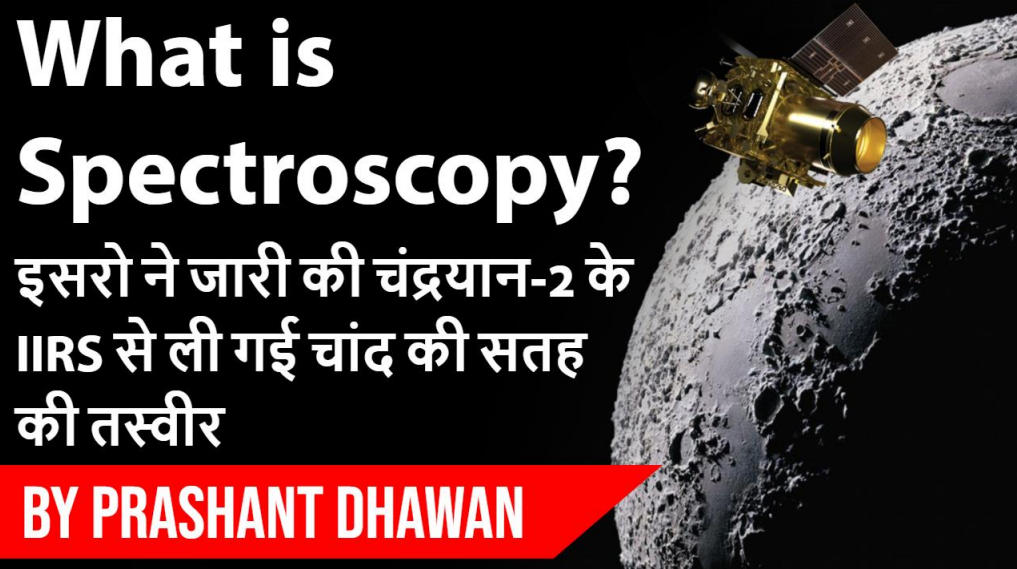Table of Contents

BASICS
- The Indian Space Research Organisation (ISRO) released an image from Chandrayaan-2 showing measurements from the Moon, carried out by the instrument Imaging Infrared Spectrometer (IIRS).
- Such studies make up a branch of physics called spectroscopy.
ORBITER PAYLOADS

SPECTROSCOPY
- Spectroscopy is the study of the interaction between matter and electromagnetic radiation
- Electromagnetic radiation, which includes light, has characteristics of waves and particles. Each “particle” of light, or ” photon ,” has a discrete amount of energy that can be transferred to a molecule.
ELECTROMAGNETIC RADIATION
- A kind of radiation including visible light, radio waves, gamma rays, and X-rays, in which electric and magnetic fields vary simultaneously.


THE HISTORICAL IMAGE
- The image covers part of the lunar farside in the northern hemisphere.
- A few prominent craters (Sommerfield, Stebbins and Kirkwood) are seen in the image.
THE DETAILS
- The IIRS on-board Chandrayaan-2 is designed to measure the reflected sunlight and emitted part of Moon light from the lunar surface in narrow and contiguous spectral channels (bands) ranging from ~800 – 5000 nanometre (0.8-5.0 micrometre (um))
THE OBJECTIVE
- The major objective of IIRS is to understand the origin and evolution of the Moon in a geologic context by mapping the lunar surface mineral and volatile composition using signatures in the reflected solar spectrum
THERE ARE MANY THEORIES ON HOW THE MOON WAS MADE


THERE ARE MANY THEORIES ON HOW THE MOON WAS MADE
- Capture theory – Some researchers suggest that the moon may have originally formed elsewhere — perhaps even around another planet, such as Venus — before being grabbed by Earth’s gravitational pull.
THERE ARE MANY THEORIES ON HOW THE MOON WAS MADE
- Co-formation – It’s also possible that the moon formed alongside Earth 4.5 billion years ago, coalescing from gas and dust in the same part of our solar system’s protoplanetary disk.
- While this hypothesis can account for the isotopic similarities between the Earth and moon, it falls short in other ways. It cannot explain the high angular momentum of the Earth-moon system, for example, or why the moon has such a small iron core compared to that of our planet.
HOW HUMANITY WILL BENEFIT FROM ISRO’S RESEARCH
- From the reflected solar spectrum, scientists will look for signatures, including of minerals.
- This will help map the lunar surface composition, which in turn will help us understand the Moon’s origin and evolution in a geologic context.





















 WhatsApp
WhatsApp